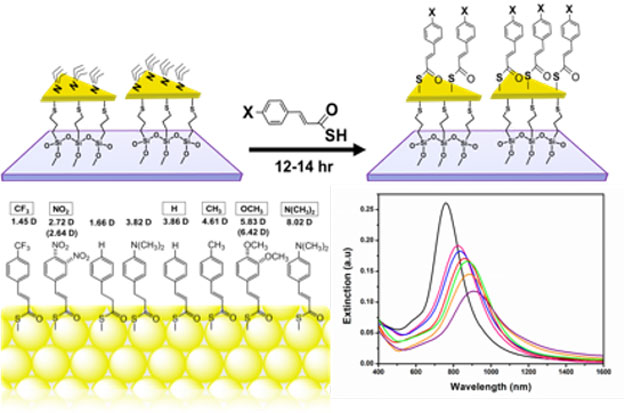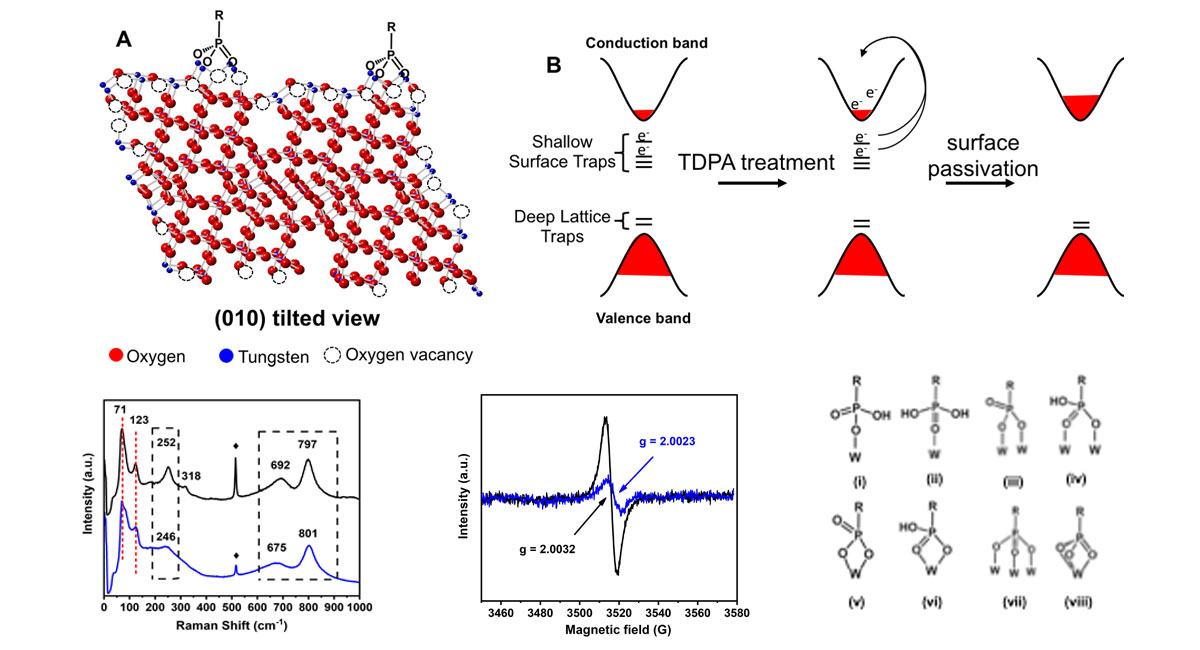Fundamental Studies Examining NC-Surface Ligand Electronic Interactions
Programmable manipulation of inorganic-organic interfacial electronic properties of ligand-functionalized plasmonic NCs is the key parameter dictating their applications such as catalysis, photovoltaics, and biosensing. Functionalization of NCs with organic surface ligands forming a self-assembled monolayer (SAM) alters the local dielectric environment that results in modulation of NC LSPR properties.
Two factors significantly contribute to the LSPR spectra changes: (1) chemical interface damping where a direct electron transfer occurs at the NC-ligand interfacial orbitals i.e., hybrid orbitals that contain properties of both inorganic metal and organic passivating ligands, and (2) delocalization of electron wave functions in NC-ligand interfacial orbitals. Both mechanisms change the electron density of metal thus altering the LSPR properties. Therefore, it is not just the structure of the NC core but also the ligand chemistry that dictates the performance of ligand-passivated plasmonic NCs for specific plasmonic-based applications.
The ligand-controlled tuning of NC LSPR properties has been explored for a long time, yet most ligand choices showed very limited plasmonic responses, in their LSPR peak shift and broadening. We have determined that the intrinsic dipole moment of ligands bearing double bond conjugations provides unprecedentedly large LSPR responses upon functionalization to gold nanocrystals of various shapes. Our mechanistic hypothesis is that the wavefunctions of plasmon active electrons can delocalize at the inorganic-organic interface. Based on these fundamental studies, we plan to expand the research is to develop generalizable rules for designing new functional plasmonics using noble metals and transition metal-oxide NCs functionalized with uniquely designed ligands that will display unique optoelectronic properties. Furthermore, we integrate density functional theory (DFT) including Vienna Ab initio Simulation Package (VASP) and finite-difference time-domain (FDTD) calculation to mechanistically better understand the most influential structure parameters dictating the optoelectronic properties of functional plasmonics. Our laboratory is well-equipped for multiple-steps organic synthesis to prepare unique ligands for the functionalization of metals and metal-oxide NCs. Therefore, the research integrates experimental, computer modelling, and theoretical approaches to examine electronic interactions between NCs and ligands.




